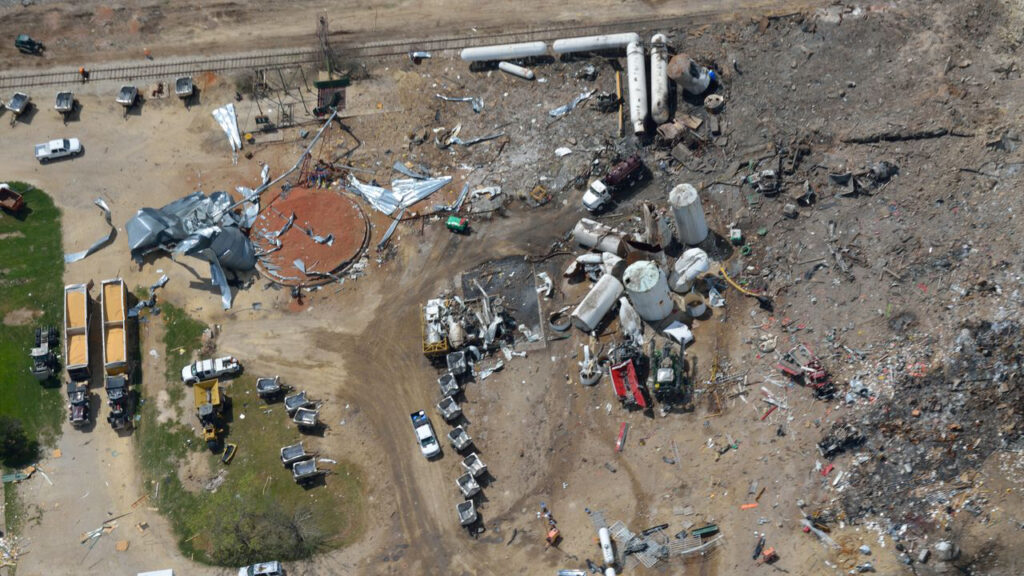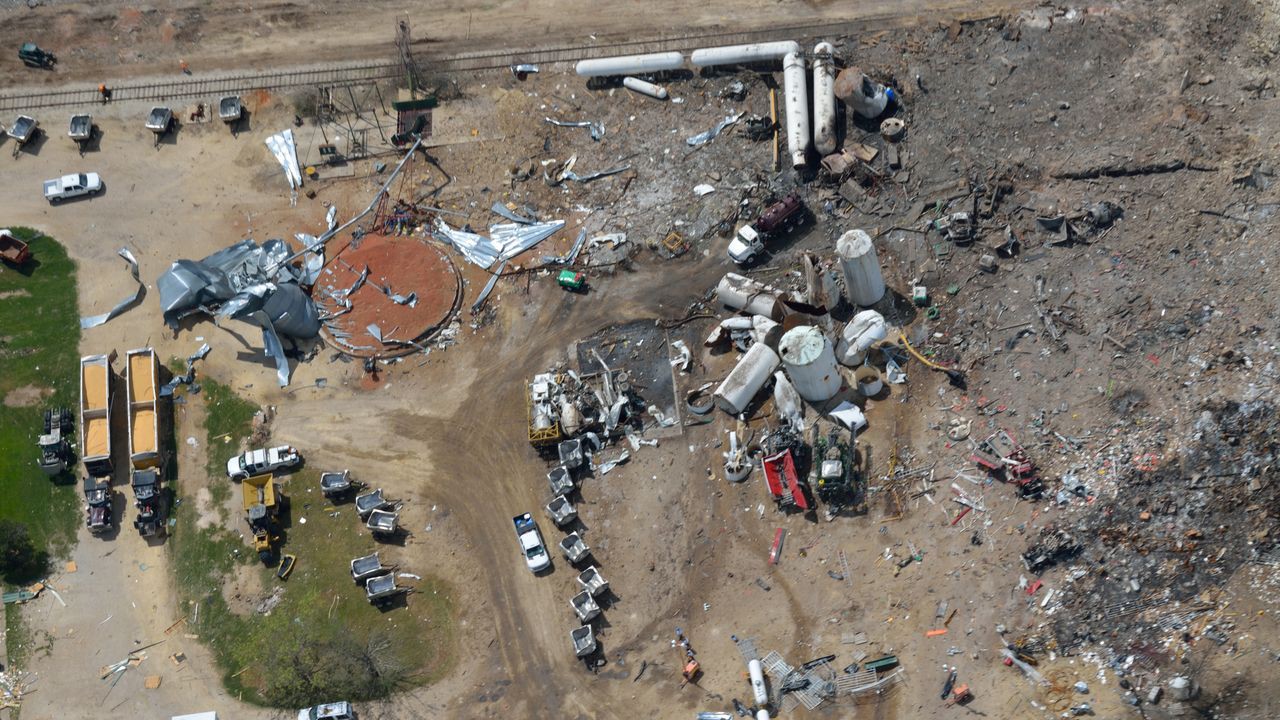A Decade On: Reflecting on the West Fertilizer Explosion and the Lessons Learned

April 17th, 2023, marks the tenth anniversary of the West Fertilizer Company explosion and fire, one of the deadliest industrial accidents in recent US history.
The incident took place in the small town of West, Texas, resulting in 15 fatalities, over 200 injuries, and widespread destruction. As we remember those who lost their lives in this tragedy, it is vital to reflect on the lessons learned to prevent similar incidents in the future. This blog post will discuss the West Fertilizer explosion, its causes, and the essential safety and regulatory lessons that have emerged over the past decade.
Background: The West Fertilizer Explosion and Fire
The West Fertilizer Company facility stored and distributed large quantities of ammonium nitrate, a highly reactive chemical widely used as a fertilizer and explosive. On April 17, 2013, a fire broke out at the facility, which rapidly escalated and eventually ignited the stored ammonium nitrate. The resulting explosion was massive, registering as a 2.1 magnitude earthquake and causing extensive damage to the surrounding area.
Investigations conducted by the U.S. Chemical Safety and Hazard Investigation Board (CSB) and the Bureau of Alcohol, Tobacco, Firearms, and Explosives (ATF) revealed multiple safety shortcomings at the facility, including inadequate safety measures, poor risk management, insufficient zoning regulations, and weak emergency response coordination.
Lesson 1: Strengthening Chemical Safety Regulations
The West Fertilizer explosion highlighted the need for robust chemical safety regulations in the United States. In response, regulatory authorities have taken steps to tighten oversight, storage, and handling of hazardous chemicals. The U.S. Environmental Protection Agency (EPA) has updated its Risk Management Program (RMP) rules, requiring facilities handling hazardous substances to develop comprehensive risk management plans that account for worst-case scenarios and implement proper safety measures.
Additionally, the Occupational Safety and Health Administration (OSHA) has increased its focus on process safety management (PSM), which aims to prevent the release of highly hazardous chemicals. Both RMP and PSM regulations now emphasize the importance of emergency planning, employee training, and incident investigation to minimize the risk of future accidents.
Lesson 2: Enhancing Zoning Regulations and Land Use Planning
The West Fertilizer explosion exposed the lack of adequate zoning regulations and land-use planning. The facility was situated dangerously close to homes, schools, and a nursing home, exacerbating the extent of the damage caused by the explosion. Since the incident, state and local authorities have started reevaluating their zoning and land-use policies, placing greater emphasis on separating hazardous industrial facilities from residential and other sensitive areas.
Moving forward, community planners and local governments need to collaborate more closely to ensure that hazardous materials are stored and handled at a safe distance from populated areas, thereby mitigating the risk to public safety.
Lesson 3: Improving Emergency Response Coordination
The West Fertilizer explosion highlighted the need for better emergency response coordination among various agencies and first responders. Many of the fatalities in the incident were firefighters who were unaware of the extent of the danger posed by the fire. Since then, significant efforts have been made to improve communication and information-sharing among first responders and emergency management agencies.
These improvements include developing comprehensive pre-incident plans that outline the potential hazards, response strategies, and necessary resources for emergencies involving hazardous materials. In addition, regular training and exercises have been implemented to ensure that first responders are well-prepared for complex and high-risk incidents.
Related: How the Crisis Management Team Supports Emergency Response Activities
Lesson 4: Encouraging Community Awareness and Preparedness
The West Fertilizer explosion demonstrated the importance of community awareness and preparedness in the face of industrial accidents. Public awareness campaigns, such as the EPA’s Local Emergency Planning Committees (LEPCs), have been initiated to foster increased communication between facilities, emergency responders, and residents. These campaigns aim to educate communities about the potential risks associated with hazardous materials and the appropriate steps to take in case of an emergency.
Communities can further enhance preparedness by conducting regular town hall meetings, discussing safety concerns, and establishing clear channels of communication with local industries. Ensuring that residents are aware of potential hazards in their neighborhoods and are equipped with the necessary information to respond effectively can significantly reduce the impact of future incidents.
Lesson 5: Fostering a Culture of Safety in the Chemical Industry
Lastly, the West Fertilizer explosion underscored the need for cultivating a strong safety culture within the chemical industry. Companies must prioritize safety and risk management in their operations, investing in proper employee training, hazard identification, and mitigation measures. Additionally, organizations should regularly evaluate and update their safety procedures, striving for continuous improvement.
Industry associations, such as the American Chemistry Council (ACC) and the Fertilizer Institute, can play a crucial role in promoting safety best practices among their members. By working together, companies, regulators, and industry groups can create an environment that prioritizes safety, reduces risks, and ultimately prevents future tragedies.
Summary
The West Fertilizer explosion was a devastating event that exposed significant safety and regulatory shortcomings in the handling of hazardous chemicals. Over the past decade, important lessons have been learned, leading to improved chemical safety regulations, zoning policies, emergency response coordination, community awareness, and a greater emphasis on safety culture within the industry.
As we commemorate the tenth anniversary of this tragic incident, it is crucial to remember the lives lost and continue working together to ensure that the necessary measures are in place to prevent such disasters from occurring again. By learning from the past and implementing the lessons gained, we can help create safer communities and a more responsible chemical industry for generations to come.








The West Fertilizer explosion was a horrific tragedy, but it’s necessary for crisis pros to learn its lessons and, more importantly, act upon what we’ve learned. Rob’s article is a thoughtful analysis we can all learn from and act upon.
Thank you David. It really was a lesson for many reasons and stakeholder coordination was probably one of the biggest lessons. A truly tragic event!